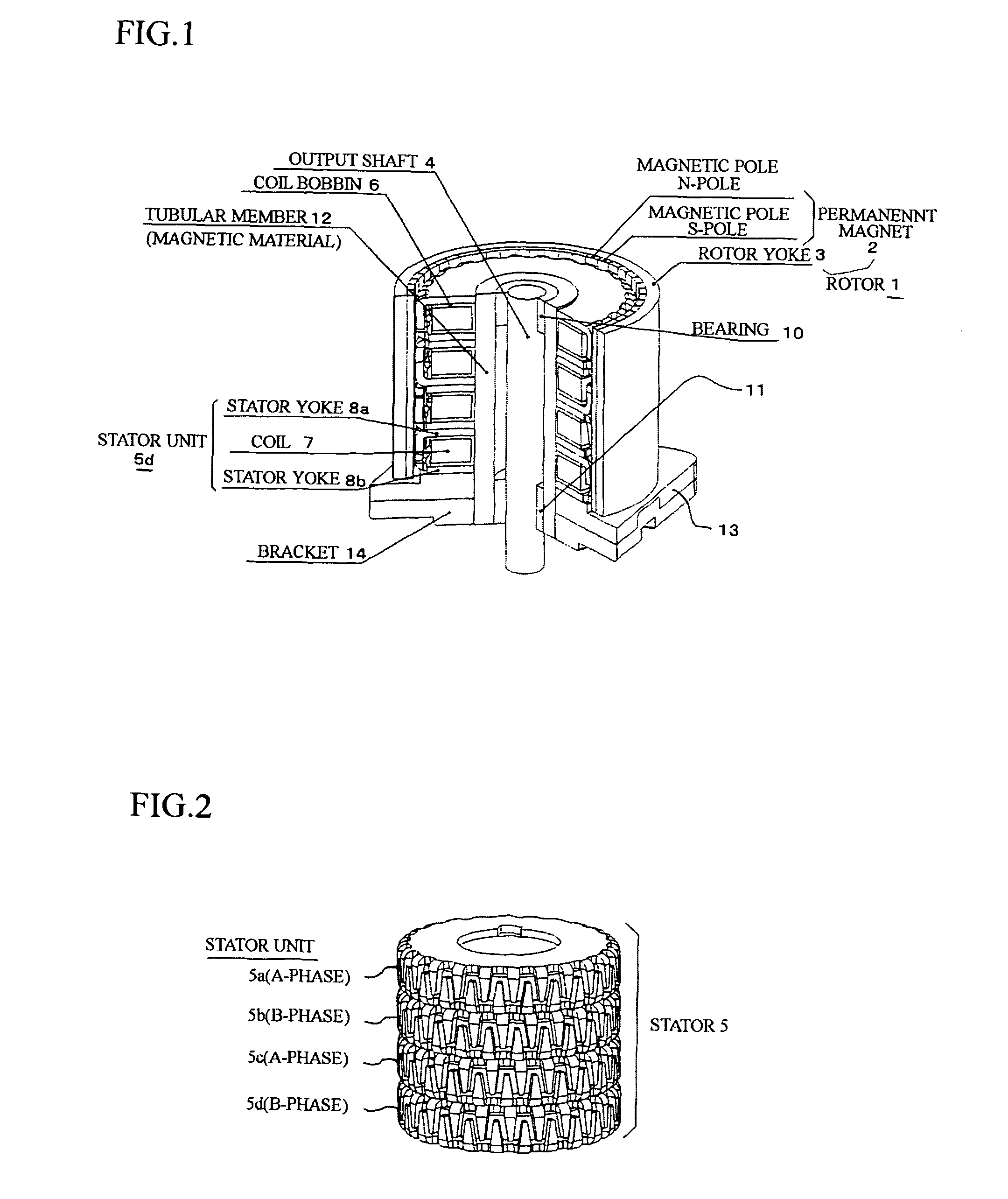Permanent magnet type rotary machine
a permanent magnet and rotary machine technology, applied in the direction of magnet circuit shape/form/construction, instruments, horology, etc., can solve the problems of increasing cogging torque and rotational vibration, increasing causing rotational fluctuation and vibration, so as to reduce the resultant cogging torque of the whole rotary machine and reduce the cogging torque. , the effect of high reduction of cogging torqu
- Summary
- Abstract
- Description
- Claims
- Application Information
AI Technical Summary
Benefits of technology
Problems solved by technology
Method used
Image
Examples
Embodiment Construction
[0044]Preferred embodiments of the present invention will now be described in detail with reference to the accompanying drawings. In the following embodiments, step motors will be explained as the permanent magnet type rotary machines.
[0045]In each of the embodiments, the step motor is a claw pole type step motor comprising: a stator constituted by a plurality of stator units, which are coaxially stacked and in each of which a coil is sandwiched between stator yokes and magnetic pole teeth (claw poles) are mutually engaged; and a rotor including a permanent magnet having magnetic poles, which respectively face the claw poles of the stator yokes.
[0046]An example for the explanation is given as the step motor, which is an outer rotor type two-phase step motor, and is assembled in office automation machines, peripheral equipment of a computer system, vehicles, factory automation machines, e.g., conveyor, etc.
[0047]An outline of the two-phase step motor will be explained with reference ...
PUM
 Login to View More
Login to View More Abstract
Description
Claims
Application Information
 Login to View More
Login to View More - R&D
- Intellectual Property
- Life Sciences
- Materials
- Tech Scout
- Unparalleled Data Quality
- Higher Quality Content
- 60% Fewer Hallucinations
Browse by: Latest US Patents, China's latest patents, Technical Efficacy Thesaurus, Application Domain, Technology Topic, Popular Technical Reports.
© 2025 PatSnap. All rights reserved.Legal|Privacy policy|Modern Slavery Act Transparency Statement|Sitemap|About US| Contact US: help@patsnap.com



